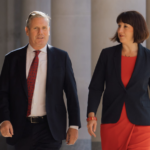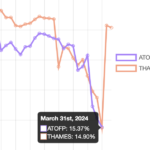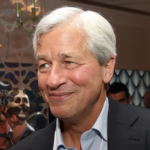The Risky Finance banking tool now includes FX swaps, and our visualisation shows rapid growth, led by Citi and JP Morgan. The Bank for International Settlements is concerned about these foreign exchange products, and last year warned that they amounted to huge, growing off-balance sheet dollar debts in the financial system. However, new academic research suggests the concerns are overblown.
The latest BIS Quarterly Review focuses on the two most important FX contracts, as measured by market size. There are FX forwards, where two counterparties agree to exchange one currency for another at a future date. And there are FX swaps, where currencies are exchanged at the outset and then swapped back again at a pre-agreed rate in the future.
|
This visualisation shows the notional amount of FX swaps reported by the largest six U.S. banks between 2015 and June 2023. Since 2020, the total notional has increased by $5 trillion, reflecting the use of the instruments as yield-enhancement tools in a low interest rate environment. Data source: FFIEC filings |
While these contracts sound similar, they are used for very different purposes. FX forwards are used to hedge a forecast cashflow, or an FX valuation event anticipated in the future. FX swaps don’t hedge anything, but are are more of a cash enhancement tool to take advantage of interest rate differentials: you swap a low-yielding currency into a higher yielding one for a period of time, with the repayment leg of the swap eliminating the FX risk.
<div class=”login-container”>
According to the BIS, there were $66 trillion outstanding in these two types of contracts as of June 2022, of which $21 trillion were between dealers and the remaining $45 trillion were with customers. And the BIS went further in its latest report, including data from CLS, an FX settlement infrastructure provider owned by a consortium of banks.
As of mid-2022 there were $21 trillion of FX contracts on the CLS platform, of which $17 trillion were between banks, and with FX swaps accounting for 80% of the total. The BIS approves of CLS because it clears bank-to-bank transactions, reducing the risk of settlement failure in this huge market.
And CLS data suggests that US banks have the lion’s share of this interbank market in FX swaps, and are using it to lend dollars to customers, while borrowing dollars from non-US banks.
Neither the BIS or CLS names any banks, but using Risky Finance analysis of FFIEC filings we can identify the big two: Citi, with $7.6 trillion of FX swaps, and JP Morgan with $4.3 trillion. (Non-US banks are harder to analyse because they don’t break down the types of FX instrument in their derivative disclosures). Taking the top six US banks together, there has been a $5 trillion increase in the past three years.
The BIS believes this is dangerous, and since 2017 has been making this argument based on an analogy. FX swaps are similar to repurchase agreements, the BIS says, and repo was a source of systemic risk in 2008. Therefore FX swaps are also systemically risky.
This argument has been criticised by academics, however. Suppose you own euros and want to invest in dollar assets. You can either swap euros for dollars in the FX swap market, and invest those dollars in something like a Treasury bond. Or, you can finance the purchase of a Treasury in the repo market. In both cases, the investor gets the benefit of owning the Treasury bond until the FX swap or repo matures.
Are these the same, as the BIS says? No, because of one crucial difference. In the FX swap, you have to hand over your euros at the start of the contract, and only get them back at the end. With the repo, you get to keep your euros throughout, because the Treasury bond serves as collateral for the dollar cash advance you use to buy it with. In accounting terms that is clear leverage, that isn’t present with FX swaps.
This lack of leverage is implicit in the examples that the BIS uses to illustrate how the FX swaps market operates. What were referred to as ‘non-bank financial institutions’ in its December 2022 paper, the BIS now specifies as Dutch pension funds or Japanese insurers. Both types of institution have long-term liabilities, but are providers of liquidity in the short-term market.
Better still, we can even find an example of a real institution that has publicly spoken about using FX swaps in this way. Payments giant PayPal is required to keep large amounts of customer cash in the jurisdictions where it operates, often earning low yields. The company reports having some $22 billion of derivatives that it uses to boost returns.
The PayPal example also illustrates why the numbers in the FX swap market are so eye-wateringly large: a phenomenon called interest rate parity whittles away the additional yield, a classic example of the ‘no free lunch’ principle in finance.
This doesn’t mean that there isn’t some risk, somewhere in the FX swap market. If the global demand to swap low-yielding currencies into dollars outstrips the supply, the Federal Reserve can step in with its own emergency swap lines to other central banks. Whatever the BIS says, FX swaps are not going to cause the next financial crisis.
A version of this article was previously published by the FT Banking Risk & Regulation newsletter.
 Levelling the Playing Field
Levelling the Playing Field
 Barclays and Labour's growth plan
Barclays and Labour's growth plan
 Plummeting bonds reflect souring UK mood for outsourcing and privatisation
Plummeting bonds reflect souring UK mood for outsourcing and privatisation
 Dimon rolls trading dice with excess capital
Dimon rolls trading dice with excess capital